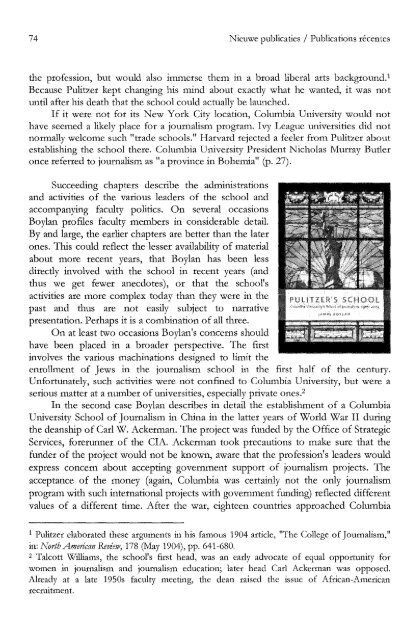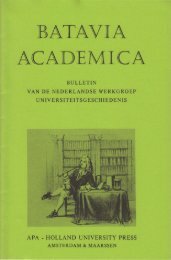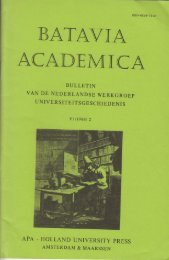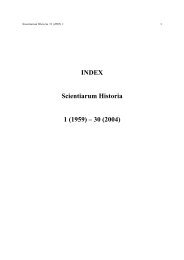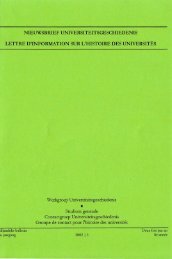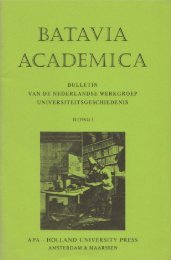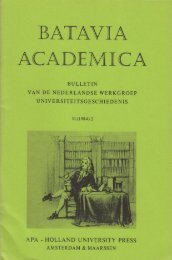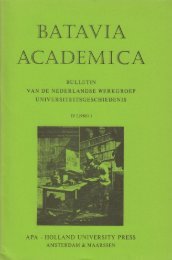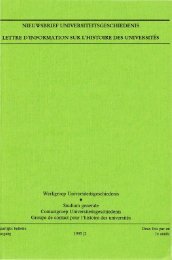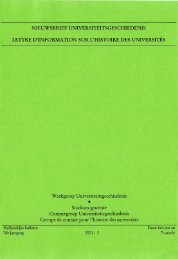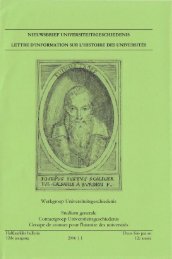Jaargang / Année 10, 2004, nr. 2 - Gewina
Jaargang / Année 10, 2004, nr. 2 - Gewina
Jaargang / Année 10, 2004, nr. 2 - Gewina
Create successful ePaper yourself
Turn your PDF publications into a flip-book with our unique Google optimized e-Paper software.
74 Nieuwe publica ties I Publications recentes<br />
the profession, but would also immerse them in a broad liberal arts background.l<br />
Because Pulitzer kept changing his mind about exactly what he wanted, it was not<br />
until after his death that the school could actually be launched.<br />
If it were not for its New York City location, Columbia University would not<br />
have seemed a likely place for a journalism program. Ivy League universities did not<br />
normally welcome such "trade schools." Harvard rejected a feeler from Pulitzer about<br />
establishing the school there. Cohunbia University President Nicholas Murray Butler<br />
once referred to journalism as "a province in Bohemia" (p. 27).<br />
Succeeding chapters describe the administrations<br />
and activities of the various leaders of the school and<br />
accompanying faculty politics. On several occasions<br />
Boylan profiles faculty members in considerable detail.<br />
By and large, the earlier chapters are better than the later<br />
ones. This could reflect the lesser availability of material<br />
about more recent years, that Boylan has been less<br />
directly involved with the school in recent years (and<br />
thus we get fewer anecdotes), or that the school's<br />
activities are more complex today than they were in the<br />
past and thus are not easily subject to narrative<br />
presentation. Perhaps it is a combination of all three.<br />
On at least two occasions Boylan's concerns should<br />
have been placed in a broader perspective. The first<br />
involves the various machinations designed to limit the<br />
e<strong>nr</strong>ollment of Jews in the journalism school in the first half of the century.<br />
Unfortunately, such activities were not confmed to Columbia University, but were a<br />
serious matter at a number of universities, especially private ones. 2<br />
In the second case Boylan describes in detail the establishment of a Columbia<br />
University School of Journalism in China in the latter years of World War II during<br />
the deanship of Carl W. Ackerman. The project was funded by the Office of Strategic<br />
Services, forerunner of the CIA. Ackerman took precautions to make sure that the<br />
funder of the project would not be known, aware that the profession's leaders would<br />
express concern about accepting government support of journalism projects. The<br />
acceptance of the money (again, Columbia was certainly not the only journalism<br />
program with such international projects with government funding) reflected different<br />
values of a different time. After the war, eighteen countries approached Columbia<br />
1 Pulitzer elaborated these arguments in his famous 1904 article, "The College of Journalism,"<br />
in: NorthAmerimn Review, 178 (May 1904), pp. 641-680.<br />
2 Talcott Williams, the school's first head, was an early advocate of equal opportunity for<br />
women in journalism and journalism education; later head Carl Ackerman was opposed.<br />
Already at a late 1950s faculty meeting, the dean raised the issue of African-American<br />
recruitment.


